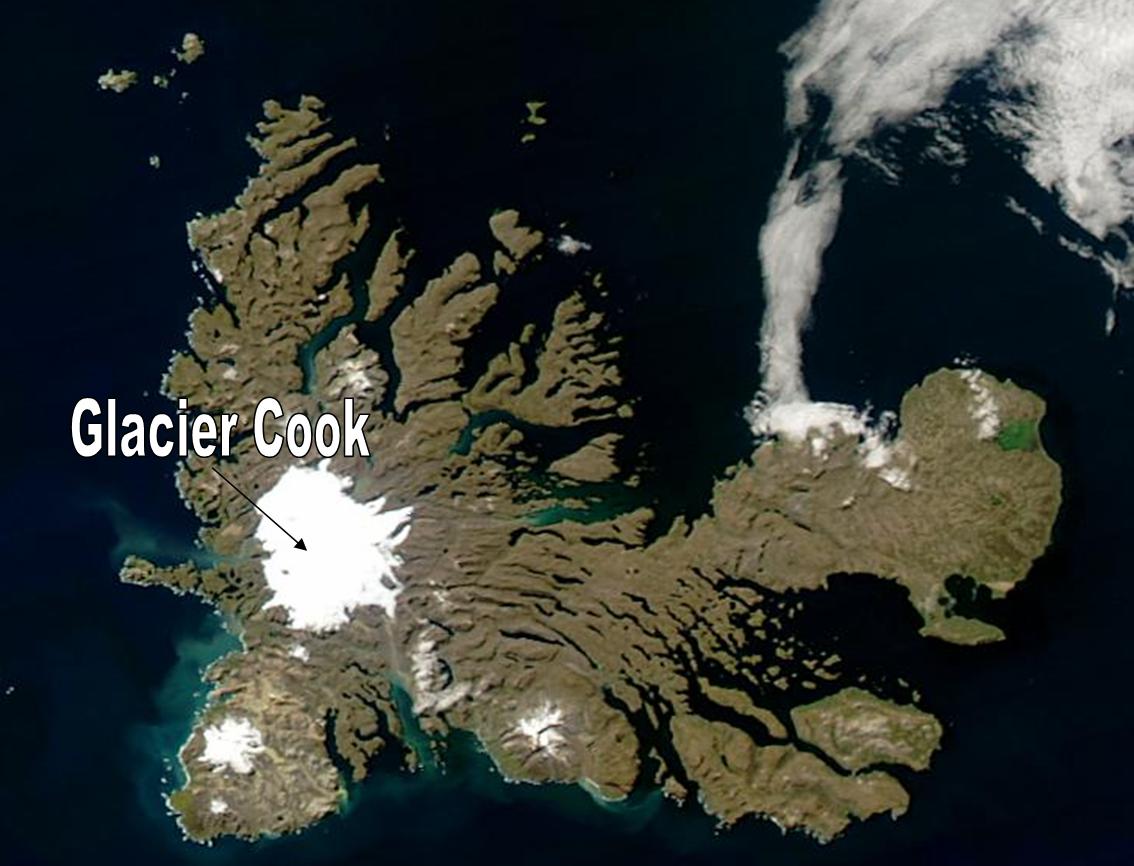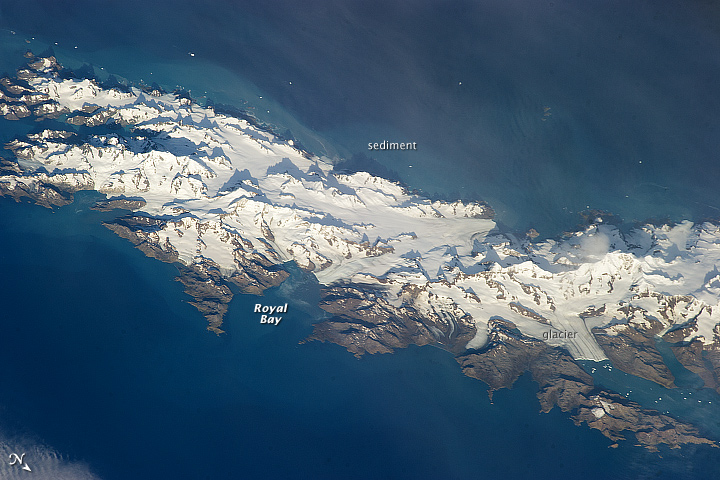|
Cook Glacier (South Georgia)
Cook Glacier () is a glacier which flows in a north-northeasterly direction to Saint Andrews Bay on the north coast of South Georgia. It was named by the German group of the International Polar Year Investigations based at nearby Moltke Harbour in 1882–83, for Captain James Cook. See also * List of glaciers in the Antarctic * Glaciology Glaciology (; ) is the scientific study of glaciers, or more generally ice and natural phenomena that involve ice. Glaciology is an interdisciplinary Earth science that integrates geophysics, geology, physical geography, geomorphology, climato ... References * Glaciers of South Georgia {{SouthGeorgia-glacier-stub ... [...More Info...] [...Related Items...] OR: [Wikipedia] [Google] [Baidu] |
Cook Ice Cap
The Cook Ice Cap or Cook Glacier ( or ''Glacier Cook'') is a large ice cap in the Kerguelen Islands in the French Southern Territories zone of the far Southern Indian Ocean. Geography The Cook Ice Cap reaches a maximum elevation of in its central area.GoogleEarth It had a surface of approximately in 1963, having shrunk to about in recent times. Named after British explorer James Cook (1728–1779), on French navigational charts of the early 20th century this ice cap appears as 'Glacier Richthofen' '''' 11 September 1909, no 3472 Glaciers About sixty |
Cooke Glacier
Cooke Glacier () is a glacier about long flowing north from the northern end of the Fletcher Peninsula. It was named by the Advisory Committee on Antarctic Names after Kirsten Cooke Healey, of the United States Geological Survey (USGS), Woods Hole, Massachusetts, a computer graphics specialist from the mid-1990s onwards for the USGS project that is compiling the Satellite Image Atlas of Glaciers and 25 Glaciological and Coastal-Change Maps of Antarctica. See also * List of glaciers in the Antarctic * Glaciology Glaciology (; ) is the scientific study of glaciers, or more generally ice and natural phenomena that involve ice. Glaciology is an interdisciplinary Earth science that integrates geophysics, geology, physical geography, geomorphology, climato ... References * Glaciers of Ellsworth Land {{EllsworthLand-glacier-stub ... [...More Info...] [...Related Items...] OR: [Wikipedia] [Google] [Baidu] |
South Georgia Island
South Georgia ( es, Isla San Pedro) is an island in the South Atlantic Ocean that is part of the British Overseas Territory of South Georgia and the South Sandwich Islands. It lies around east of the Falkland Islands. Stretching in the east–west direction, South Georgia is around long and has a maximum width of . The terrain is mountainous, with the central ridge rising to at Mount Paget. The northern coast is indented with numerous bays and fjords, serving as good harbours. Discovered by Europeans in 1675, South Georgia had no indigenous population due to its harsh climate and remoteness. Captain James Cook in made the first landing, survey and mapping of the island, and on 17 January 1775 he claimed it a British possession, naming it "Isle of Georgia" after King George III. Through its history, it served as a whaling and seal hunting base, with intermittent population scattered in several whaling bases, the most important historically being Grytviken. The main settleme ... [...More Info...] [...Related Items...] OR: [Wikipedia] [Google] [Baidu] |
St Andrews Bay, South Georgia
Saint Andrews Bay is a bight 2 miles (3.2 km) wide, indenting the north coast of South Georgia immediately south of Mount Skittle. Probably first sighted by the British expedition under Cook which explored the north coast of South Georgia in 1775. The name dates back to at least 1920 and is now well established. On charts where abbreviations are used, the name may be abbreviated to St. Andrews Bay. King penguins form huge breeding colonies, and the one at St Andrews Bay has over 150,000 birds and is (2021) probably the largest in the world. Because of the long breeding cycle, colonies are continuously occupied. Cook Glacier The Cook Ice Cap or Cook Glacier ( or ''Glacier Cook'') is a large ice cap in the Kerguelen Islands in the French Southern Territories zone of the far Southern Indian Ocean. Geography The Cook Ice Cap reaches a maximum elevation of in its centr ..., which once terminated in the bay, has retreated from the current beach since the 1970s, leaving a la ... [...More Info...] [...Related Items...] OR: [Wikipedia] [Google] [Baidu] |
Glacier
A glacier (; ) is a persistent body of dense ice that is constantly moving under its own weight. A glacier forms where the accumulation of snow exceeds its Ablation#Glaciology, ablation over many years, often Century, centuries. It acquires distinguishing features, such as Crevasse, crevasses and Serac, seracs, as it slowly flows and deforms under stresses induced by its weight. As it moves, it abrades rock and debris from its substrate to create landforms such as cirques, moraines, or fjords. Although a glacier may flow into a body of water, it forms only on land and is distinct from the much thinner sea ice and lake ice that form on the surface of bodies of water. On Earth, 99% of glacial ice is contained within vast ice sheets (also known as "continental glaciers") in the polar regions, but glaciers may be found in mountain ranges on every continent other than the Australian mainland, including Oceania's high-latitude oceanic island countries such as New Zealand. Between lati ... [...More Info...] [...Related Items...] OR: [Wikipedia] [Google] [Baidu] |
International Polar Year Investigations
The International Polar Years (IPY) are collaborative, international efforts with intensive research focus on the polar regions. Karl Weyprecht, an Austro-Hungarian naval officer, motivated the endeavor in 1875, but died before it first occurred in 1882–1883. Fifty years later (1932–1933) a second IPY took place. The International Geophysical Year was inspired by the IPY and was organized 75 years after the first IPY (1957–58). The fourth, and most recent, IPY covered two full annual cycles from March 2007 to March 2009. The First International Polar Year (1882–1883) The First International Polar Year was proposed by an Austro-Hungarian naval officer, Karl Weyprecht, in 1875 and organized by Georg Neumayer, director of the German Maritime Observatory. Rather than settling for traditional individual and national efforts, they pushed for a coordinated scientific approach to researching Arctic phenomena. Observers made coordinated geophysical measurements at multiple locatio ... [...More Info...] [...Related Items...] OR: [Wikipedia] [Google] [Baidu] |
Moltke Harbour
Royal Bay is a bay, wide and indenting , entered between Cape Charlotte and Cape Harcourt along the north coast of South Georgia. Like other parts of the archipelago, many birds breed here, including king penguins, gentoo penguins, and blue-eyed cormorants. History Royal Bay was discovered and named by a British expedition under James Cook in 1775. In 1882 a German group of the International Polar Year Investigations expedition under Schrader was sent out to observe the transit of Venus was stationed at Royal Bay. They were based on the north shore of the bay in 1882–83. The group came in on the steam corvette Steam frigates (including screw frigates) and the smaller steam corvettes, steam sloops, steam gunboats and steam schooners, were steam-powered warships that were not meant to stand in the line of battle. There were some exceptions like for exam ... which was the first powered vessel to reach South Georgia. Moltke Harbour, a one-mile wide bay on the northwest sid ... [...More Info...] [...Related Items...] OR: [Wikipedia] [Google] [Baidu] |
James Cook
James Cook (7 November 1728 Old Style date: 27 October – 14 February 1779) was a British explorer, navigator, cartographer, and captain in the British Royal Navy, famous for his three voyages between 1768 and 1779 in the Pacific Ocean and to New Zealand and Australia in particular. He made detailed maps of Newfoundland prior to making three voyages to the Pacific, during which he achieved the first recorded European contact with the eastern coastline of Australia and the Hawaiian Islands, and the first recorded circumnavigation of New Zealand. Cook joined the British merchant navy as a teenager and joined the Royal Navy in 1755. He saw action in the Seven Years' War and subsequently surveyed and mapped much of the entrance to the St. Lawrence River during the siege of Quebec, which brought him to the attention of the Admiralty and the Royal Society. This acclaim came at a crucial moment for the direction of British overseas exploration, and it led to his commission in ... [...More Info...] [...Related Items...] OR: [Wikipedia] [Google] [Baidu] |
List Of Glaciers In The Antarctic
There are many glaciers in the Antarctic. This set of lists does not include ice sheets, ice caps or ice fields, such as the Antarctic ice sheet, but includes glacial features that are defined by their flow, rather than general bodies of ice. The lists include outlet glaciers, valley glaciers, cirque glaciers, tidewater glaciers and ice streams. Ice streams are a type of glacier and many of them have "glacier" in their name, e.g. Pine Island Glacier. Ice shelves are listed separately in the List of Antarctic ice shelves. For the purposes of these lists, the Antarctic is defined as any latitude further south than 60° (the continental limit according to the Antarctic Treaty System). List by letters * List of glaciers in the Antarctic: A–H * List of glaciers in the Antarctic: I–Z See also * List of Antarctic and subantarctic islands * List of Antarctic ice rises * List of Antarctic ice shelves * List of Antarctic ice streams * List of glaciers * List of subantar ... [...More Info...] [...Related Items...] OR: [Wikipedia] [Google] [Baidu] |
Glaciology
Glaciology (; ) is the scientific study of glaciers, or more generally ice and natural phenomena that involve ice. Glaciology is an interdisciplinary Earth science that integrates geophysics, geology, physical geography, geomorphology, climatology, meteorology, hydrology, biology, and ecology. The impact of glaciers on people includes the fields of human geography and anthropology. The discoveries of water ice on the Moon, Mars, Europa and Pluto add an extraterrestrial component to the field, which is referred to as "astroglaciology". Overview A glacier is an extended mass of ice formed from snow falling and accumulating over a long period of time; glaciers move very slowly, either descending from high mountains, as in valley glaciers, or moving outward from centers of accumulation, as in continental glaciers. Areas of study within glaciology include glacial history and the reconstruction of past glaciation. A glaciologist is a person who studies glaciers. A glacial geologist ... [...More Info...] [...Related Items...] OR: [Wikipedia] [Google] [Baidu] |


_p252_Polar_Station_in_Sodankylä.jpg)



